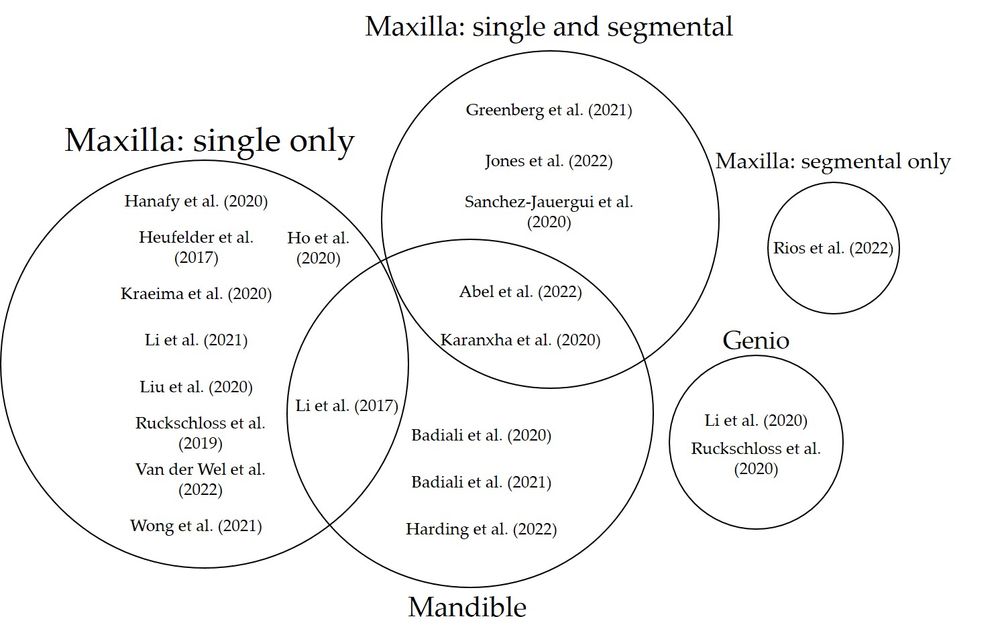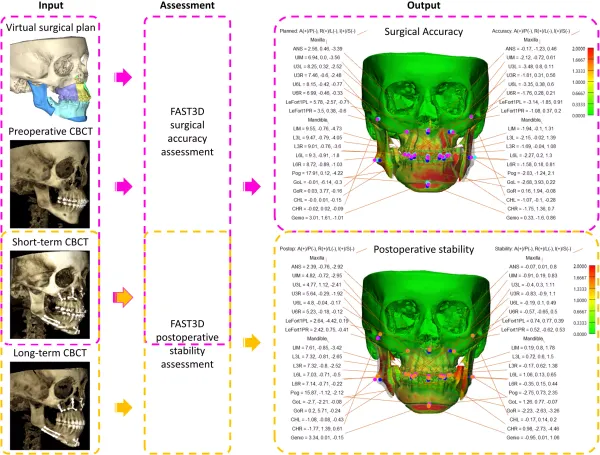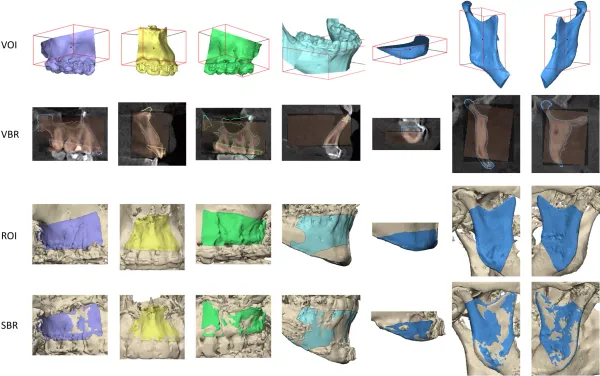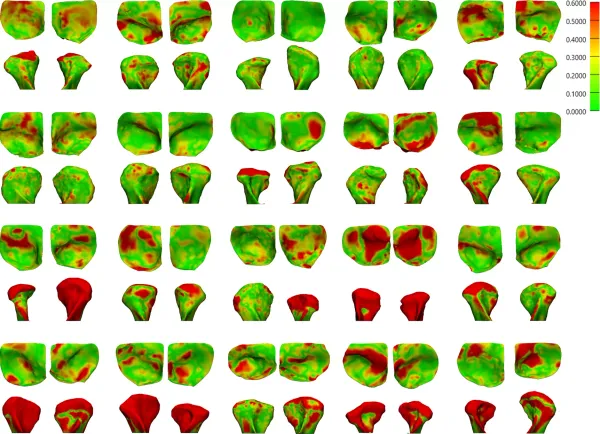Three-Dimensional Accuracy and Stability of Personalized Implants in Orthognathic Surgery: A Systematic Review and a Meta-Analysis
Authors
Diaconu A, Holte MB, Berg-Beckhoff G, Pinholt EM
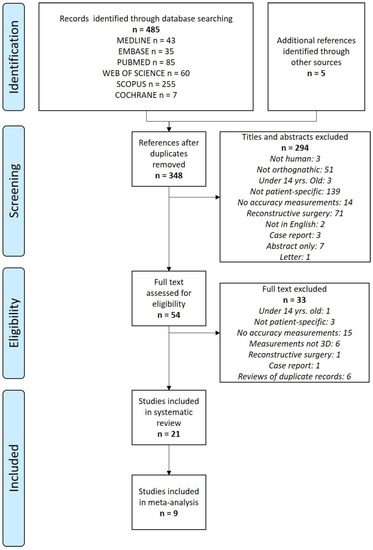
Abstract
Objectives
This systematic review aimed to determine the accuracy/stability of patient-specific osteosynthesis (PSI) in orthognathic surgery according to three-dimensional (3D) outcome analysis and in comparison to conventional osteosynthesis and computer-aided designed and manufactured (CAD/CAM) splints or wafers.
Methods
The PRISMA guidelines were followed and six academic databases and Google Scholar were searched. Records reporting 3D accuracy/stability measurements of bony segments fixated with PSI were included.
Results
Of 485 initial records, 21 met the eligibility (566 subjects), nine of which also qualified for a meta-analysis (164 subjects). Six studies had a high risk of bias (29%), and the rest were of low or moderate risk. Procedures comprised either single-piece or segmental Le Fort I and/or mandibular osteotomy and/or genioplasty. A stratified meta-analysis including 115 subjects with single-piece Le Fort I PSI showed that the largest absolute mean deviations were 0.5 mm antero-posteriorly and 0.65° in pitch. PSIs were up to 0.85 mm and 2.35° more accurate than conventional osteosynthesis with CAD/CAM splint or wafer (p < 0.0001).
Conclusion
The clinical relevance of the improved accuracy of PSI has not been shown. The literature on PSI for multi-piece Le Fort I, mandibular osteotomies and genioplasty procedure is characterized by high methodological heterogeneity and a lack of randomized controlled trials. The literature is lacking on the 3D stability of bony segments fixated with PSI.


